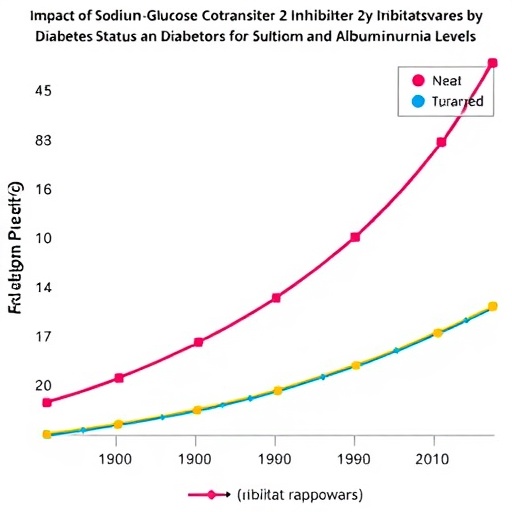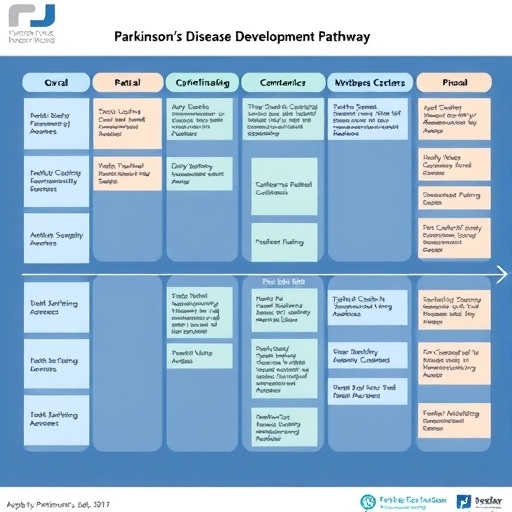In today’s rapidly evolving landscape of public health, understanding the transmission dynamics of infectious diseases like SARS-CoV-2 becomes paramount, especially in sensitive environments such as schools. Recent research conducted by Wabnitz et al. highlights critical findings on how evidence-based and consensus-driven guidelines have significantly influenced decision-making processes in German schools during the pandemic. This multi-component qualitative analysis sheds light on the efficacy of interventions designed to mitigate the spread of the virus among students and staff.
The research underscores the necessity of a structured approach to public health guidelines in educational settings. Prior to the implementation of these guidelines, many schools struggled to find a balance between maintaining educational integrity and ensuring the safety of their students. With varying degrees of compliance across different states, the inconsistency in how COVID-19 protocols were applied could create confusion and anxiety within school communities. The study brings to light how a unified framework can facilitate a more coherent response to the challenges posed by infectious diseases.
The researchers used qualitative methods to gather insights from diverse stakeholders within the education system, including teachers, administrators, and public health officials. These interviews revealed a notable trend: decision-makers often relied on both empirical evidence and collective consensus to adapt their policies. The guidelines not only provided clarity on infection control measures but also offered a platform for collaboration among various stakeholders. This was essential in ensuring that measures were not only scientifically sound but also acceptable to those implementing them.
.adsslot_bZPynxstvV{width:728px !important;height:90px !important;}
@media(max-width:1199px){ .adsslot_bZPynxstvV{width:468px !important;height:60px !important;}
}
@media(max-width:767px){ .adsslot_bZPynxstvV{width:320px !important;height:50px !important;}
}
ADVERTISEMENT
Adding a layer of complexity, the study highlights the emotional and psychological factors influencing decision-making in schools. Stakeholders expressed concerns about the mental health implications of prolonged lockdowns and remote learning, leading to a more nuanced approach in policies. The guidelines encouraged decision-makers to strive for a balance that would allow schools to function while prioritizing health. Consequently, educational leaders became champions of safety protocols, fostering a culture of accountability and reassurance.
In practical terms, the guidelines included recommendations on mask usage, ventilation improvements, and social distancing measures tailored to the unique environments of different schools. The qualitative analysis indicates a positive reception from the educational community regarding these measures. Teachers reported feeling more empowered when equipped with clear, actionable strategies that originated from rigorous scientific evaluation. School environments transformed into spaces where health and education could coexist, rather than being at odds with one another.
Another key finding from the study is how transparency in decision-making contributed to greater adherence to public health recommendations. Stakeholders emphasized the importance of clear communication regarding the rationale behind certain decisions. This transparency fostered trust among parents, students, and staff, making it more likely that guidelines would be followed meticulously. As schools navigated the uncertain waters of the pandemic, the role of effective communication became increasingly clear.
The implications of Wabnitz et al.’s research extend beyond the immediate context of COVID-19. Their findings may guide future public health responses to infectious disease outbreaks in schools. The integration of scientific evidence and stakeholder consensus could serve as a model for other sectors grappling with similar challenges. The study advocates for an adaptive public health framework that not only responds to current needs but is also robust enough to handle future crises.
Moreover, the proactive approach outlined in the study serves as a reminder of the importance of preparedness in public health policy. As the world continues to contend with the remnants of the pandemic, schools must not return to business as usual but rather integrate the lessons learned into future health strategies. This includes investing in infrastructure to improve air quality and embracing flexible teaching models that can pivot in response to emerging health threats.
Despite the positive aspects highlighted in the research, it is also essential to acknowledge challenges that persist. As schools implement health protocols, disparities in resources and support contribute to unequal outcomes. Some institutions may struggle with inadequate funding to meet the required standards, leading to worries about the sustainability of such programs. Policymakers must consider these inequities to ensure that all schools can effectively implement the recommended measures.
As the world gradually emerges from the pandemic, the ongoing evaluation of guidelines’ effectiveness remains vital. Continuous assessment will allow for adjustments based on current epidemiological data, ensuring that measures adapt to changing circumstances. This dynamic approach will help mitigate complacency, ensuring the sustained commitment to protecting the health of students and educators alike.
Furthermore, the study highlights the critical role of community engagement in the success of health initiatives. Involving parents and community members in decision-making processes leads to broader support for public health measures. When families feel that their voices are heard, they are more likely to encourage compliance with guidelines at home, reinforcing the school’s efforts.
In conclusion, the research conducted by Wabnitz, Rueb, and Rehfuess provides invaluable insights into the intersection of public health and education during a crisis. By emphasizing the importance of evidence-based guidelines and consensus in decision-making, the study lays the groundwork for future health policies in schools. As we navigate the unpredictable landscape of infectious diseases, learning from these experiences will be crucial in shaping resilient educational environments that prioritize both health and learning.
The quest to effectively manage the impacts of infectious diseases, especially in schools, will undoubtedly continue. This study serves as a benchmark for future research, emphasizing that a collaborative approach fueled by both evidence and community involvement can yield successful outcomes in safeguarding educational settings. As more studies emerge, they can refine these methodologies, ensuring that we are better prepared for whatever challenges lie ahead in maintaining the health of our schools.
Subject of Research: Impact of guidelines on SARS-CoV-2 transmission in schools
Article Title: Assessing the impact of an evidence- and consensus-based guideline for controlling SARS-CoV-2 transmission in German schools on decision-making processes: a multi-component qualitative analysis
Article References:
Wabnitz, K., Rueb, M., Rehfuess, E.A. et al. Correction: Assessing the impact of an evidence- and consensus-based guideline for controlling SARS-CoV-2 transmission in German schools on decision-making processes: a multi-component qualitative analysis.
Health Res Policy Sys 23, 74 (2025). https://doi.org/10.1186/s12961-025-01346-4
Image Credits: AI Generated
DOI:
Keywords: SARS-CoV-2, guidelines, schools, decision-making, public health
Tags: compliance with COVID-19 guidelinesCOVID-19 safety protocolsdecision-making in education during pandemicseducational integrity and health safety balanceevidence-based interventions in schoolsmitigating virus spread in educational settingspublic health guidelines for educationqualitative research in schoolsSARS-CoV-2 transmission in schoolsstakeholder perspectives on school safetystructured approach to public health in schoolsunified framework for school health policies





